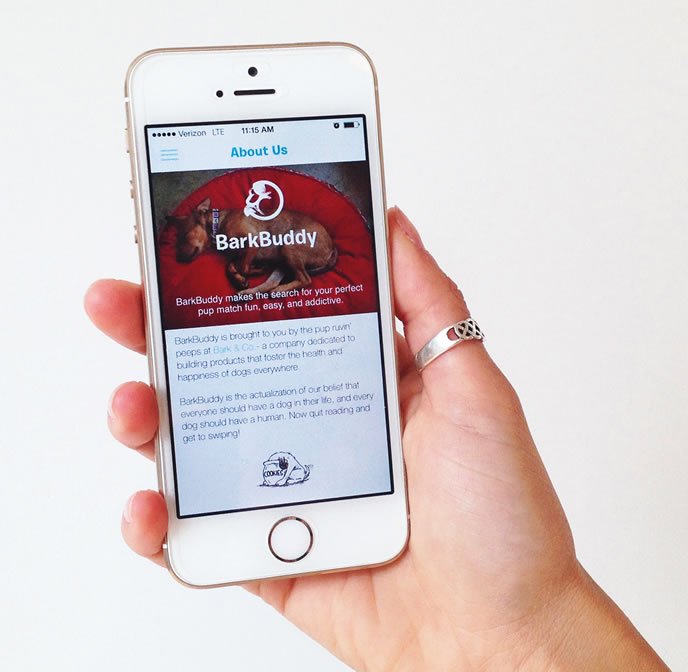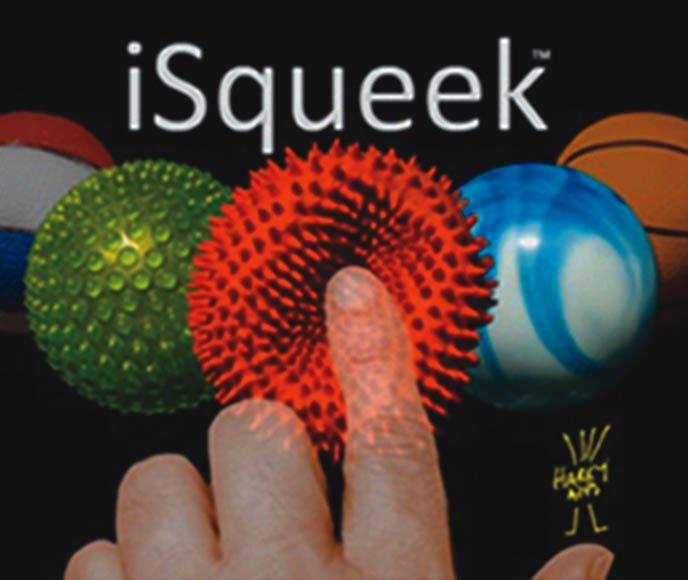It’s incredible how many aspects of our lives have been enhanced and transformed by technology in just the past few years. Anyone who uses a computer or mobile phone is at least aware of his or her ability to obtain recommendations for businesses or directions to a location. If you’re a dog owner and need a reputable emergency veterinary clinic in a strange town, having the tools to find such a clinic and get there in record time may literally save a dog’s life. But web- and mobile-device-based technology can also be used by dog owners in countless other important ways – and we’re sharing some of the most fun and useful ones with you.
Note: This article deals with high-technology, web- or mobile-device-based products and services that dog owners can use to help manage their dogs’ health and to improve their enjoyment and experiences with their dogs. The companies that provide these products are technology-based themselves – and as such, tend to follow the modern trend of being available to consumers and clients only through email or “contact us” forms accessed through their websites.

There’s an app for that
Mobile-device applications – better known as “apps” – are a convenient way to keep information and tools at your fingertips. Many of the apps discussed below are available in free and paid versions; the paid versions offer more bells and whistles. Some apps are designed for either Apple or Android phones only, while others are available in both platforms. To download or purchase these apps, check iTunes (for Apple products) or Google Play (for Android phones and e-readers).
-
- Looking for a dog to adopt? Try the BarkBuddy app (the Tinder for finding dogs to adopt), which sources photos from Petfinder.com and allows users to swipe through profiles of dogs in their area and use sliders to filter by gender, age, activity level, and size.
- Social networking apps abound to help you meet people who love their dogs as much as you love yours, find a play-mate for your dog, or locate dog-friendly businesses. Meet My Dog is a private social network that allows dog owners to discover, connect, and share with other dog owners in their community.
- It’s impossible to be familiar with all the different breeds of dogs, especially when it seems that new ones show up every day, so having a breed-guide app at your fingertips can be handy. Perfect Dog Pro is only one of the many breed identification apps available. This app lists hundreds of breeds, complete with photos and descriptions. While it has an “identify” function that works through your selection of the dog’s physical characteristics, I’m waiting for the ability to upload a photo and have the app search for a match. What a boon that would be for shelter workers!
- If you need help taking a great photo of your dog, the Dog Boogie app has built-in sound effects to assist you in getting the dog’s attention. It also enables you to create a profile for your dog and share it with a community of dog people as well as with Facebook and Twitter, or send via email. BarkCam is a similar app, offering sounds of interest to your dog and sharing capabilities, but it also includes features to add filters, quotes, or meme text directly to the image.

- My favorite sound-effect app is iSqueek; if you love to squeak dog toys as much as most dogs do, you will love this app, too. It allows you to choose from among 18 virtual squeaky dog toys that react realistically when touched. Each toy has a unique action and sound, utilizing the touch screens and speaker of your mobile device. This app was developed as a tribute to the developer’s dog, Hemmy; it allows the developer to have the sound of the deceased dog’s favorite toy with him at all times.
- Want to start clicker training? Or do you just want more information about what it is? iClicker is a dog-training app that features tutorials and a digital clicker. Available for iPhones and iPads only.
Health-related Apps
Dog-related apps are not all frivolous fun; some developers have a sincere interest in helping you keep your dog healthy.
- The ASPCA’s mobile app provides a wealth of features, including access to a personalized pet-recovery kit for when your pet goes missing; critical advice to ensure your pet’s safety before, during, and after a disaster (even when there is no data connectivity); the ability to store and manage pet records; and relevant news alerts regarding animal welfare.
- There are numerous apps for pet first aid. The top-rated ones include Pet First Aid by the American Red Cross and Pet First Aid for Your Dog, Cat, Puppy, or Kitten. These apps are easy to use and include life-saving information such as emergency tools and contacts as well as first aid tips. There’s also information about disaster preparedness, emergency dog-management tools (including muzzles and restraints), and medication administration, as well as a pet profile feature where you can maintain your dog’s health records.
- Similarly, other pet-health apps such as Pet Phone and Pet Master Pro provide a way for you to keep all your pet’s details – medical conditions, special needs, insurance info, appointment management, identification details, photos, veterinary contacts – on your digital device.
- PupTox is a handy guide to more than 250 items that are toxic to dogs and cats, categorized by beverages and liquids, foods and solids, chemicals, non-food plants, and other common hazards. It’s not created for emergency situations (it does not include first aid), but it can help you be more informed about pet hazards. It’s worth installing on your phone for its chocolate-toxicity calculator alone.
- The petMD Symptom Checker allows the user to search more than 2,500 articles on dog and cat health based on the symptoms selected. Each article includes a detailed description of a condition and its symptoms, causes, diagnosis, treatment options, and prevention. It’s easy to use: simply choose dog or cat, select the area on a diagram of a dog that is presenting with an issue, then check off the related symptoms. A list of articles will be offered that may offer insight to your pet’s condition. It’s not possible for the app to be comprehensive, but it can guide the user to understanding a number of general pet-health issues.
- Here’s an awesome app that can be used to test your dog’s urine for signs of diabetes, urinary tract infection, crystals, liver disease, a dangerous level of dehydration, ketonuria, proteinuria, and anemia: the Petnostics Mobile App and Petnostics Urine Cup. Using the cup, you collect a small sample of your dog’s urine; the lid of the cup is made with reagent test strips, and the test begins when you put the lid on the cup and turn it over. After just a minute, using your iPhone’s camera, the app will give you the test results and indicate whether you should seek veterinary attention for your dog or all is well. At $10 per cup, this is a relatively inexpensive test that can help you determine when a vet visit is in order.
- Dosecast is a very useful medication-reminder app. While not designed specifically for pets, it works well for those of us whose dogs have to be given medications on a schedule. This flexible app allows you to program a custom administration schedule based on daily, weekly, monthly, or variable day/hour requirements and sends notifications at the specified intervals. Dose amounts and instructions can also be customized, with the ability to set maximum dosages to help avoid overdosing. The pro edition logs history and compliance, including late and missed doses, tracks quantity and provides refill alerts, and supports multiple pets on the same app. The app can also track contacts, pharmacy, and prescribing veterinarians. In the United States, the app connects to a drug database that allows you to easily find the medication to add to your dog’s profile.

Monitor your dog
As I was putting the finishing touches on this article, my dog’s veterinarian and I became concerned that my senior dog, Duncan, might have a seizure while I was away (I had arrived home to find a possible residual symptom). It was time to put monitoring technology into action.
My colleague Lisa Lyle Waggoner of Cold Nose College often uses monitoring technology with her separation anxiety clients, so I asked her for a recommendation. She replied quickly with her favorite, the Presence home-monitoring app.
Within an hour, I had located two older iPhones that did not have provider service, and, using wi-fi, downloaded the free Presence app onto each of them. With the app also downloaded onto my in-use iPhone, I linked the three devices, and placed the older ones in spots with strategic viewing angles of the areas where I suspect Duncan spends most of his time while I’m away. Not only does Presence allow live viewing, it has a motion detector option that can be adjusted to be sensitive to varying degrees of movement (I’ve set it to be activated by tiny movements) – and to record when triggered. The app sends push notifications to my phone whenever motion is detected. I’m hoping that my remote viewing turns out to be super dull. Or at least finally provide proof that Duncan reads books when I’m not there!
- I’m looking forward to having the capability to monitor specific aspects of Duncan’s health with a biometric monitor. Whistle Labs, Inc. (which merged with former competitor Tagg), says it will release the Tagg GPS Plus device this summer, featuring an air-temperature sensor that will send alerts to your phone when your pet’s environment becomes too hot or too cold. Tagg also allows you to monitor and follow your pet’s activity and track your pet’s location with advanced GPS and cellular technology.
- The Whistle Activity Monitor is a similar product, attaching to your dog’s collar and recording his activities throughout the day, producing a record of your dog’s day-to-day behavior as well as long-term trends. See whistle.com for more information about both of these products.
- FitBark is another device that attaches to your dog’s collar and records how much time she spends at different activity levels. You can view how your dog is doing at any point in the day through real-time updates via the FitBark base station or another authorized device. You can share your dog’s quantified data with your veterinarian or compare your dog’s activity level to guidelines of similar breed dogs. The device also provides a family messenger function, a to-do list, a journal, and an option to share your dog’s activity via social media. See fitbark.com.
- i4C Innovations is taking the application of technology for monitoring canine health and fitness a step further. The soon-to-be-released Voyce smart collar, developed by a team of biomedical engineers, dog experts, and Cornell University, features a sensor-enhanced collar (non-invasive, radio-frequency-based) that will be able to monitor and record key vital signs, including heart and respiratory rates as well as activity, rest, and calories burned. The collected data will be archived, providing an overview of your dog’s health history and trends, and will be conveniently accessible through all major browsers on desktops, tablets, and smartphones, as well as easily shared with your dog’s caregivers.
Additionally, Voyce will offer exclusive content to members including tools such as medication reminders, medical-records storage, and a symptom checker. This types of wearable activity monitor can provide data that will help you understand your dog’s health and behavior, and make appropriate changes to his diet and exercise programs. See mydogsvoyce.com. - Technology has taken even a greater leap toward protecting working dogs (such as those in law enforcement), especially with biometrics. These dogs often face unavoidable life-threatening situations every day, ranging from mission-specific dangers to environmental challenges. And unfortunately, many of these valuable dogs suffer or die from heat-related injuries.
To provide an extra layer of occupational health and safety for these canines, Virtual Armor has developed a small telemetry sensor that is surgically implanted in the dog’s neck to monitor body temperature with a GPS component to aid in location finding. When the dog’s temperature approaches critical condition, the handler is notified by email or text message. See virtual-armor.com for more information.
Dog gone?
Technology is increasingly finding useful ways to help us know where our pets are at all times.
- Like a visual microchip, the digital pet-identification tags by PetHub embed a Quick Response (QR) code (a machine-readable optical label) on the back of a metal engraved ID tag that others can scan should they find your pet. When a person scans your pet’s tag with their smart device, it will display your contact data and pet’s information. The premium service option delivers an even better tool: it immediately notifies you via text message if your pet’s tag has been scanned. The basic service is free; for a minimal charge, you can upgrade the account to include instant found pet alerts, scanned location information, real-time GPS, shelter alerts, and partner discounts. See pethub.com.
- Want to keep track of where your dog is at all time? Marco Polo, PeTronix RoamEO, Loc8tor GPS Tracker, Gibi, Trax, Tagg, and PocketFinder are just a few of the pet-location-monitoring products on the market. These devices come in the form of a dedicated collar or a small apparatus that attaches to your dog’s existing collar.
Most of these products utilize GPS tracking transmitted via signal to a dedicated receiver, such as computer or mobile device. Some rely on a dedicated provider network and all require some sort of subscription fee.
Most of these products allow you to set up virtual boundaries and send you alerts if your dog leaves the designated area. The devices offer a range of options such as water resistance, waterproofing, use with multiple dogs, rechargeable batteries, real-time update capabilities, ability to function in other countries, various sizes and weights, ability to track speed, ability to share capabilities with others, and ability to store tracking history. For more information, see eurekaproducts.com (Marco Polo); pettonix.com (PetTronix RoamEO); loc8tor.com (Loc8tor GPS Tracker); getgibi.com (Gibi); traxfamily.com (Trax); pettracker.com (Tagg); and pocketfinder.com (Pocket Finder).
- The Finding Rover app and website is fairly new to the market. It utilizes facial-recognition software to reconnect owners and their lost dogs. A front-facing photo with a clear image of the dog’s nose and eyes (the most important features the technology uses to identify the pet) is uploaded to the site and Finding Rover.com keeps the file in their system. Finders of dogs can upload images of found dogs and Finding Rover scans its database for a match. Finding Rover’s network is growing, and includes shelters, vets, rescue groups, other dog-related organizations, and social media. The free service is available on smart devices and the Internet. See findingrover.com.
- Pet Position is similar in that its goal is to help find missing pets fast. This app allows you to send and receive notification alerts of pets that are missing in your area. There’s even an integrated local missing-pets database. The app is free, but sending alerts requires an in-app purchase (a function that limits false alerts). Additional features include a walk tracker and locator for pet-related businesses. See petposition.com.
Out and About
There are lots of apps that can gather information about how much exercise you and your dog get on a walk or run.
- MapMyWalk is meant for mapping human’s walks, but is an ideal crossover product for dog walking. This fitness-tracking application uses the built-in GPS of a mobile device to track not only the route of your walk (or run) on an interactive map, but records the duration, distance, pace, speed, elevation, and calories burned and saves it as historical data. See mapmywalk.com.
- Specifically designed for use with dogs, Paw Tracks is a walking tracker that can be shared with friends and groups. Similarly, it has a GPS function that keeps track of the route, notes the time, and calculates the distance, and duration of the outing. It also offers options to note the time your dog eliminates (“Log a Poo,” “Log a Pee”), or is given a meal, making it a convenient app for caregivers to use in order to share up-to-date information about your dog and his schedule. See pawtracksapp.com.
- Why just walk when you can raise funds for your favorite animal organization at the same time? WoofTrax’s “Walk for a Dog” app supports an animal organization of your choice every time you take a dog for a walk, be it your own dog, a shelter dog, or as part of your business.
It’s easy to use; when you begin a walk, you simply press the “Start Walking for [Organization]” button. The app tracks your walk for the fundraising benefit, and maps your route and keeps a history log, with route, duration, distance, and speed. When you’re done, simply hit stop and the walk is credited to your selected shelter.
There are currently more than 4,000 organizations registered for benefits from the app, and more are added every day. If your favorite 501(c)(3) non-profit shelter isn’t there, you can request that it be added as a beneficiary. Donations are funded by sponsorship, advertising, and investors; WoofTrax distributes funds twice a year with notification to participants via email, Facebook, and Twitter. The more walks, the more WoofTrax can donate; it’s really that simple.
A savvy professional dog-walking colleague, Elisabeth Rosen, checked with her favorite rescue to verify that WoofTrax was a legitimate operation and following through on donations before she starting using the app. Rosen’s favorite feature is the option to upload photos of and information about the dogs she walks. See wooftrax.com. - Need to find someone to walk your dog? The Trottr app allows the user to search for a local professional dog walker, including those available for same-day and on-demand service. According to the app, these dog walkers have been “vetted, trained, certified, bonded, and insured.” (For more information on choosing a dog walker, see WDJ March 2014.) The app shows any given walker’s availability and provides information about him or her. Walks are private, timed, and tracked with GPS; payment is made with an in-app function. See trottr.us.
- You can search for places to go on outings with your dog with the Dog Park Finder Plus by DogGoes.com. This app lists more than 6,600 dog-friendly parks, beaches, and hikes with details such fees, size, descriptions, and photos of each location. Dog-friendly restaurants and interstate rest stops are also listed. With search and browse functions and reviews and ratings, this is an ideal app to use when traveling or for exploring your local area with your dog
- Another great app for traveling with your dog is BringFido; it allows you to browse pet-friendly destinations worldwide and provides information on accommodations, attractions, travel guides, restaurants, events, and pet-specific services that welcome you and your dog. You can even book reservations directly through the app. Additional features include dog-related forums, reviews, and interfaces with Facebook and Twitter. See bringfido.com.
- Dogalize provides a similar service but is specifically dog-oriented. Search and locate dog-friendly places such as parks, restaurants, hotels, veterinarians, pet shops, kennels, and more. Users can share experiences and multimedia content such as posts, photos, and videos with other dog owners.
- I don’t know of anyone who has used the DogVacay app or website, but apparently it’s trending. It’s been referred to as the Airbnb for dogs – designed to help you find boarding for your dog with a pet sitter, in your home or theirs. You can search for sitters in your area, read reviews, schedule, book, and pay online. DogVacay also provides insurance for veterinary care for every booking while your pet is under the care, control, and custody of the host. While all pet sitters listed through this app are reported to be reviewed and approved, remember to check the sitter out personally; the service does include a “Meet-n-Greet” option.
Listen and Watch
Podcasts allow me to feel like I’m a programmer of my own radio station. My all-time favorite dog-related podcast is “The Dog Trainer” (quickanddirtytips.com/dog-trainer). Host Jolanta Benal, CPDT-KA, CBCC-KA, gives dog behavior, training, and care an intelligent and witty voice.
Another enjoyable podcast comes from pet expert Steve Dale, who hosts a one-hour weekly show, “Pet World.” Don’t have an hour? Check out his Pet Minute, a daily dose of short, important topics related to pets. These podcasts are available from iTunes or directly through Dale’s website: petworldradio.net.
Veterinarian Andy Roark hosts a smart weekly YouTube show entitled “Cone of Shame.” I never fail to laugh at or learn something from these smart and humorous videos about veterinary topics. Check them out at drandyroark.com/cone-of-shame.
Here today . . .
Things move fast in the high-tech world. I can only imagine how many technology-based items for dogs have been created just in the time it’s taken me to write this article. The Pet Tutor recently announced that it is making its system “open development,” allowing customers to create custom solutions with access to apps and hardware from other developers. Every time I heard about a new app and would look at it, I would find at least a dozen more new ones.
Conversely, the makers of some of the products I wanted to include in this article went out of business by the time the article was edited and fact-checked. I hope, however, that you find some of these products to be as useful or fun as I have.





